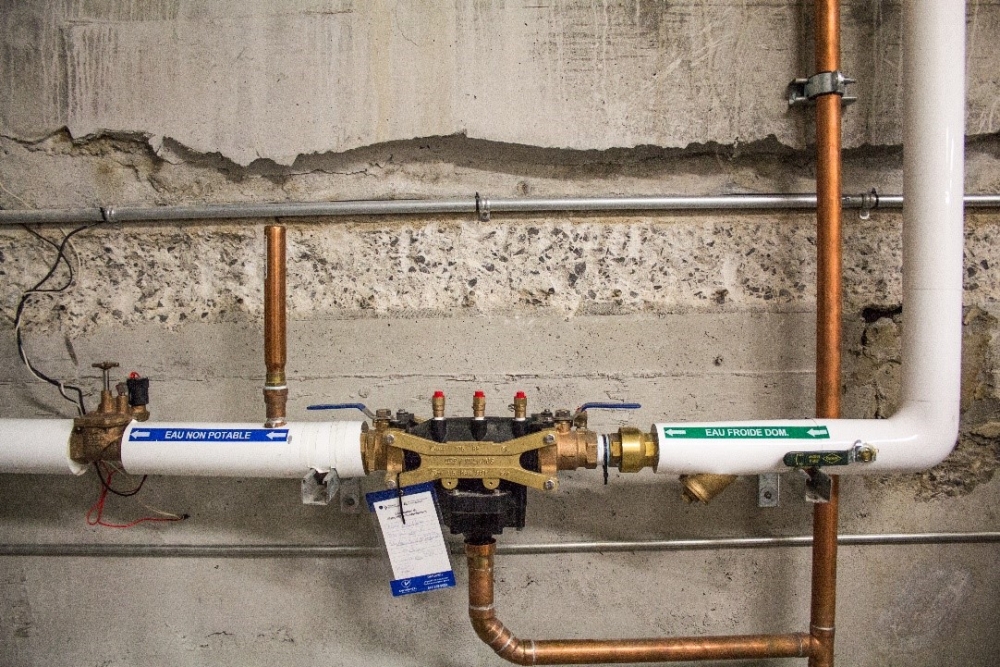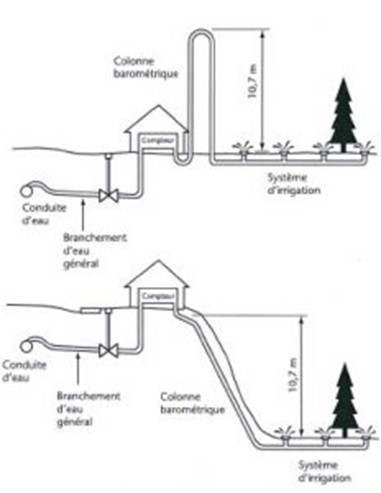
The air gap requires cutting the piping, so it is not always possible to integrate it in practice. It consists of preventing any contact between the drinking water and the source of contamination. It is for this reason that it is necessary to avoid leaving a garden hose in the pool or in the garage sump. However, in institutional, commercial, and industrial settings, it is common for a hose to be connected to a tap and immersed in a boiler or basin containing toxic products or a detergent dispenser. The hose thus becomes a potentially risky cross-connection. The following figure, from B64.10-17, illustrates the proper use of air gap:

A second approach is to install a barometric loop. This is based on the theory that an atmospheric vacuum can lift water up to a height of 10 m. For this reason, the barometric loop should rise 10.7 m or more above the drinking water supply pipe. This method is effective in case of siphoning only and is mainly used in agriculture.

Figure 2 : Colonne barométrique (tirée de la norme CSA B64.10-17/B64.10.1-17)
The other solution, which is more practical and suitable for many situations, is the installation of backflow prevention devices at strategic locations on the drinking water supply network. It is a mechanical device that prevents the spread of potentially contaminated water. There is a very wide variety of backflow prevention devices. Some must be inspected annually to ensure their proper functioning. For more information, see our blog post on the selection of a backflow prevention device.
We use cookies
Respecting your privacy matters to us. We use cookies to personalize our content and facilitate your digital experience. Some cookies may be collected with your consent.
Essential
Essential cookies help make a website usable by enabling basic functions such as page navigation and access to secure areas of the website. The website cannot function properly without these cookies.
Performance
These cookies enable us to analyze navigation on our sites and improve their operation.
Customization
Preference cookies enable a website to remember information that modifies the behavior or appearance of the site, such as your preferred language or the region you are in.
Targeted advertising
These cookies help us limit the number of times you see an advertisement, personalize our offers and services according to your centers of interest, measure the effectiveness of an advertising campaign, and so on. They may be shared with our partners.
We use cookies
Respecting your privacy matters to us. We use cookies to personalize our content and facilitate your digital experience. Some cookies may be collected with your consent.